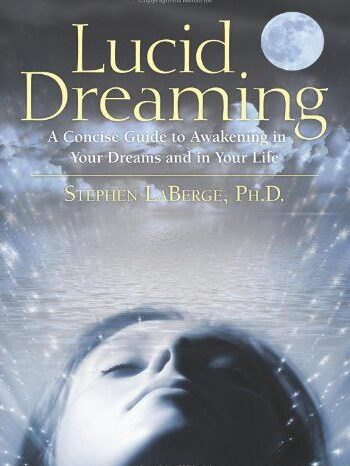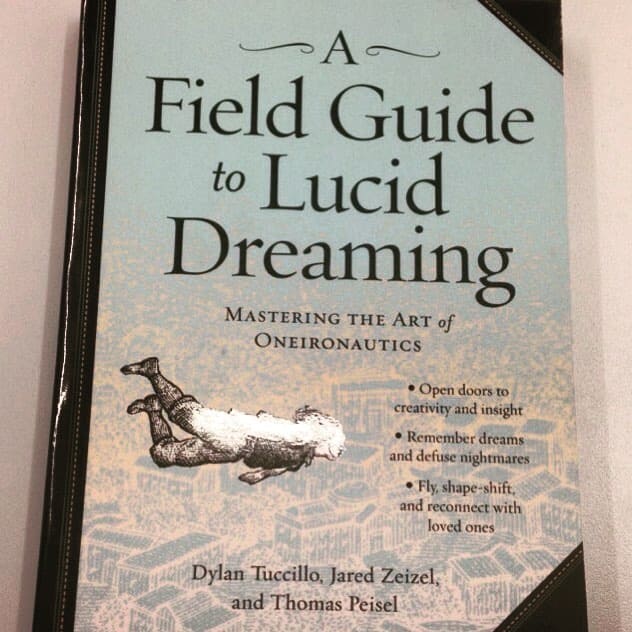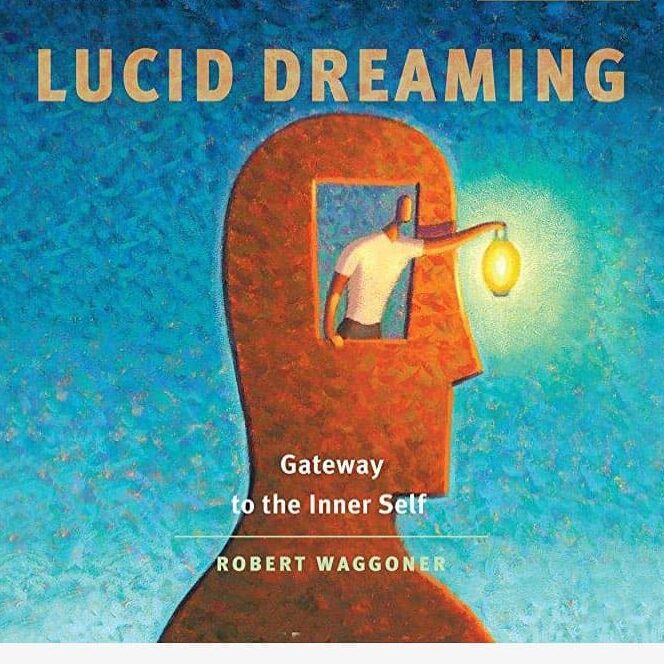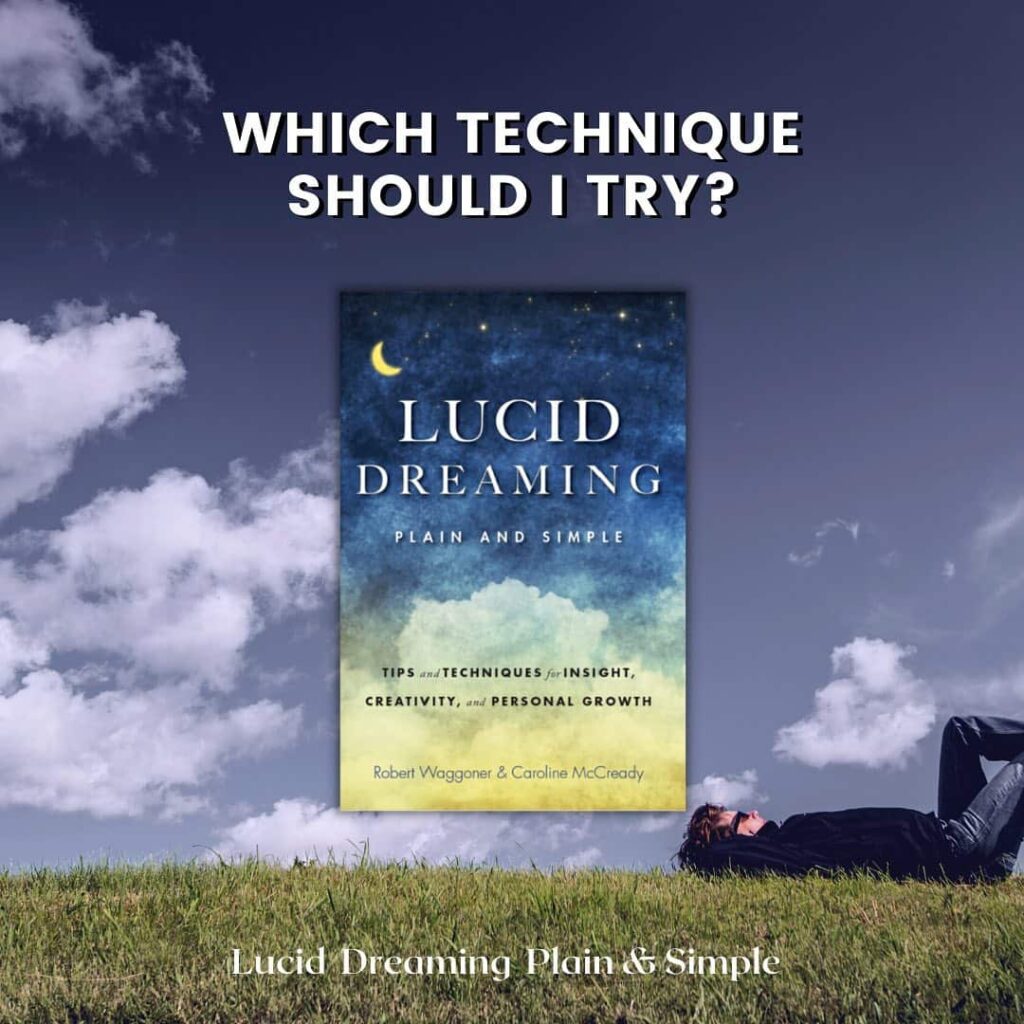We explore the topic of lucid dreaming in this article and provide you a list of the top five lucid dreaming books. These books are essential resources that can help you fully realise your dream world by drawing on years of research, firsthand knowledge, and professional insights.
Each book on our list has a distinctive viewpoint on lucid dreaming that incorporates different strategies, techniques, and philosophical considerations. So join us as we take a mesmerising tour of the top five lucid dreaming books if you’ve ever wondered how to open the doors to your own private dream realm.
Here are five widely read lucid dreaming books that are well-liked by readers and authorities in the field:
1.“Exploring the World of Lucid Dreaming”
“Exploring the World of Lucid Dreaming” is a book co-authored by Stephen LaBerge and Howard Rheingold, published in 1990. The subject of lucid dreaming, which is the state of being aware that one is dreaming while in the dream itself, is explored in depth in the book.

The writers begin by introducing the idea of lucid dreaming and going over its background, academic study, and prospective applications. In addition to reality testing, mnemonic induction of lucid dreams (MILD), and wake-induced lucid dreams (WILD), they discuss different approaches and methods to produce lucid dreams. These methods are intended to assist people in identifying the dream state and taking charge of their dreams.
The advantages of lucid dreaming, according to LaBerge and Rheingold, include the capacity to face phobias, tap into one’s creativity, and sharpen problem-solving abilities. They go over how lucid dreaming can be used for therapeutic, personal development, and self-discovery goals.
The book also examines the relationship between lucid dreaming and spirituality, as well as how lucid dreaming could improve a variety of facets of waking life, including athletic prowess, creative endeavours, and self-assurance.
Both empirical data and personal anecdotes are used by the writers to substantiate their statements throughout the book, giving readers of all levels of experience a thorough grasp of lucid dreaming. They also talk about lucid dreaming’s typical difficulties and myths.
In the area of dream studies, “Exploring the World of Lucid Dreaming” is still a well-liked and significant source that has motivated many people to investigate and grow their own lucid dreaming experiences.
2.“Lucid Dreaming: A Concise Guide to Awakening in Your Dreams and in Your Life”
“Lucid Dreaming: A Concise Guide to Awakening in Your Dreams and in Your Life” by Stephen LaBerge and Clare Johnson: In this book, Dr. Stephen LaBerge teams up with lucid dreaming expert Clare Johnson to offer practical advice and techniques for achieving lucidity in dreams. It is a comprehensive introductory book that delves into the fascinating realm of lucid dreaming.

The concept of lucid dreaming, which refers to the state of being awake and in control of a dream while it is happening, is introduced in the first chapter of the book. It draws attention to the possible advantages of lucid dreaming, including increased creativity, self-awareness, and the chance to face anxieties or learn new skills in the secure environment of the dream world.
Readers are introduced to a variety of strategies and tactics throughout the manual that can aid with dream lucidity. These methods include reality checks, dream journals, visualisation exercises, and meditation. Beginners are given step-by-step instructions and advice to help them form the habits and abilities needed to increase their likelihood of having lucid dreams.
Additionally, “Lucid Dreaming: A Beginner’s Guide to Becoming Conscious in Your Dreams” discusses typical difficulties and roadblocks that people could run into when trying to lucid dream. It includes advice on dealing with nightmares or sleep-related problems, managing emotions in dreams, and overcoming dream instability.
The manual places a strong emphasis on the necessity of continuing a regular practise and adopting a positive outlook in order to develop lucid dreaming talents. It gives readers tips on how to get around this particular dream world while urging them to enjoy the wonder and delight of lucid dreaming.
3. “A Field Guide to Lucid Dreaming”

Written by Dylan Tuccillo, Jared Zeizel, and Thomas Peisel, the book explores the concept of lucid dreaming, which refers to the state of being aware and conscious within a dream.
The book begins by introducing the reader to the idea of lucid dreaming and outlining its theoretical underpinnings as well as potential advantages. It explores the origins of lucid dreaming in prehistoric societies and its eventual acceptance in contemporary scientific studies.
“A Field Guide to Lucid Dreaming” offers a number of methods and activities to aid readers in establishing and maintaining lucid dreams. These methods include of reality checks, writing, meditation, and various visualisation exercises. The writers also cover the barriers and difficulties that one can have when striving to experience lucidity in dreams and offer solutions to them.
The writers’ own experiences and anecdotes on lucid dreaming are sprinkled throughout the book, which gives it a relatable and interesting feel. They also provide diagrams and examples to help the reader better understand the issues being discussed.
The book urges readers to embrace lucid dreaming as a tool for personal development, creativity, and self-discovery, going beyond just outlining how to do so. It looks at how lucid dreaming can be used in a variety of contexts, including psychology, spirituality, and even problem-solving.
4.“Lucid Dreaming: Gateway to the Inner Self”

A book by Robert Waggoner titled “Lucid Dreaming: Gateway to the Inner Self” was released in 2008. It addresses the unique phenomena of lucid dreaming, in which people become conscious of their dreams while they are still in them. The transforming power of lucid dreaming as a tool for spiritual investigation, self-discovery, and personal development is explored in depth in this book.
As a seasoned lucid dreamer, Waggoner offers advice, tips, and tales from his own experience to help readers on their own lucid dreaming journeys. He explores the psychological and philosophical implications of lucid dreaming while discussing several techniques for achieving lucidity, including reality checks, dream journaling, and meditation.
The idea of the “inner self” and its relationship to lucid dreaming is one of the book’s main themes. Waggoner investigates how people can access their deepest wants, fears, and unsolved difficulties through lucid dreams, which act as a gateway to the subconscious mind. He contends that one can converse with dream figures when lucid dreaming, access inner wisdom, and receive insightful knowledge about one’s waking life.
Waggoner also talks on how lucid dreaming could improve creativity, problem-solving abilities, and personal growth. He tells tales of people who have used lucid dreaming to get rid of nightmares, deal with emotional trauma, and develop a stronger sense of empowerment and self-awareness.
5.“Lucid Dreaming Plain and Simple: Tips and Techniques for Insight, Creativity, and Personal Growth”
“Lucid Dreaming Plain and Simple: Tips and Techniques for Insight, Creativity, and Personal Growth” is a book that delves into the fascinating world of lucid dreaming and provides practical guidance for individuals interested in exploring this phenomenon. Authored by Robert Waggoner and Caroline McCready, the book offers valuable insights, tips, and techniques to help readers enhance their lucid dreaming abilities.

The concept of lucid dreaming, which describes the experience of being conscious and aware while dreaming, is introduced in the first chapter of the book. It investigates the possible advantages of lucid dreaming, including obtaining knowledge, fostering creativity, and fostering personal development. Lucid dreaming allows people to actively engage in their dreams and modify the dream environment to suit their preferences.
The book “Lucid Dreaming Plain and Simple” offers a thorough explanation of the many methods for causing lucid dreams. One of these methods is reality testing, which is constantly doubting one’s waking reality in order to foster the habit of doubting reality in dreams. The practise of keeping a dream journal, which aids in improving dream recall and raising self-awareness when dreaming, is also covered in the book.
The authors also explore more complex methods like the Wake-Back-to-Bed (WBTB) approach and mnemonic induction of lucid dreams (MILD). They describe how using these techniques can raise the possibility of having lucid dreams.
The book discusses the potential uses of lucid dreaming in numerous spheres of life in addition to addressing useful practises. It explores how lucid dreaming can be used for problem-solving, self-discovery, and personal growth. To demonstrate how lucid dreaming can be a potent tool for acquiring insights and conquering obstacles, the authors offer anecdotes and real-life instances.
FAQs-
Best books on Dream Yoga ?
1."The Tibetan Yogas of Dream and Sleep"
2."Dream Yoga: Illuminating Your Life Through Lucid Dreaming and the Tibetan Yogas of Sleep"
3."Dreaming Yourself Awake: Lucid Dreaming and Tibetan Dream Yoga for Insight and Transformation"
4."Dream Yoga and the Practice of Natural Light"
Also Visit –


I need to to thank you for this fantastic read!! I certainly loved every bit of it. I have you book marked to look at new things you postÖ
https://empress-escort.com/escort-girls-beer-sheva/ Margurite Trone